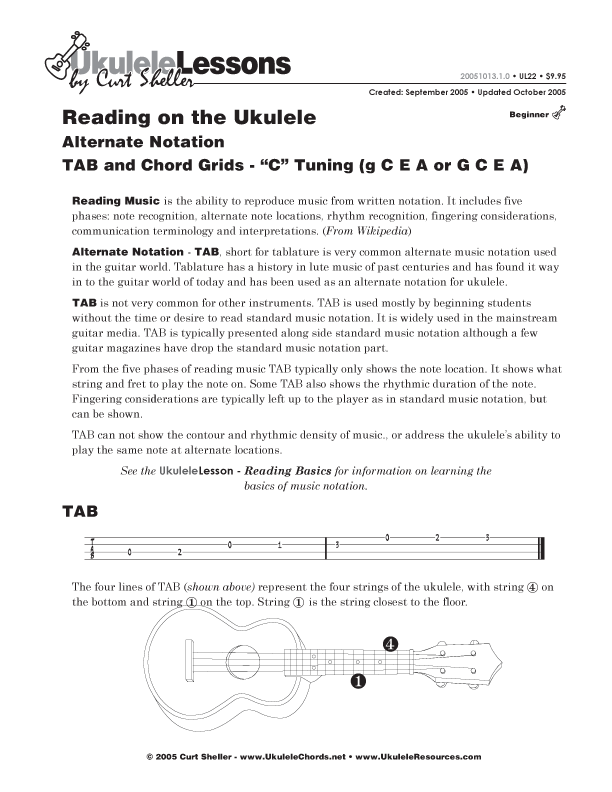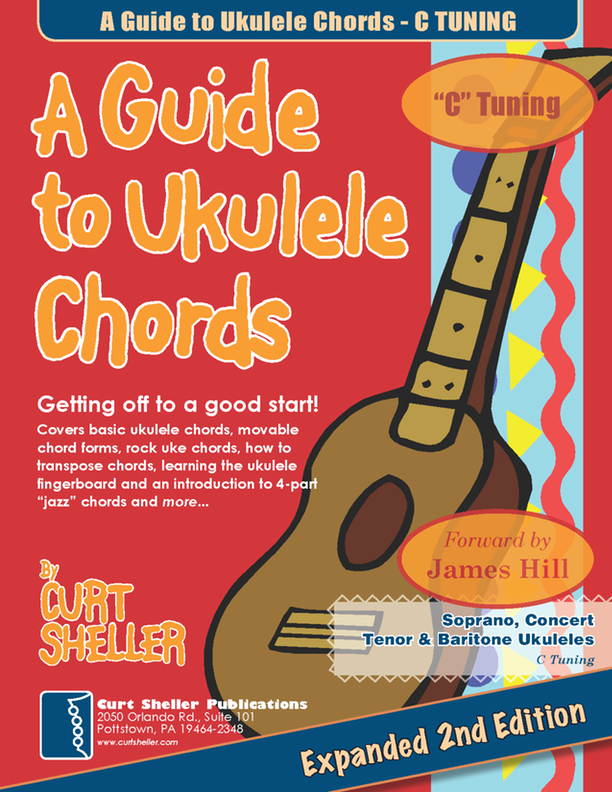Learn a new Ukulele chord every day of the year. The chord for January 3rd is G. G is a primary chord in the common keys of G, C, and D.
Learn a new Ukulele chord every day of the year. The chord for January 3rd is G.


Root Position G
Now you know three chords to play every time you walk by a piano. Now you are ready to play a simple Three Chord Progression and quite a few songs in the Key of C Major .
G is most likely one of the first three or four chords that new ukulele players learn. With C pretty much the first ukulele chord everyone learns.
traditionallymajor, minor, diminished, or augmented. With contemporary triads including sus and add chords.
Todays' open position G chord, has one embedded major triad with the root on string two.

Movable Ukulele Chords Lesson Series page.

 Understanding a Chord Diagram
Understanding a Chord Diagram

Gvariations
 Although additional fingerings are possible for many chords, fingering for any given chord depends on the science of how our fingers work and on the harmonic context the chord is being used in—what was the previous chord, and what's the next chord? The goal is to play all the notes right behind the frets when possible. Remember, longer fingers can reach the lower strings better, and finger two can stack on finger three, and finger three can stack on finger four.
Although additional fingerings are possible for many chords, fingering for any given chord depends on the science of how our fingers work and on the harmonic context the chord is being used in—what was the previous chord, and what's the next chord? The goal is to play all the notes right behind the frets when possible. Remember, longer fingers can reach the lower strings better, and finger two can stack on finger three, and finger three can stack on finger four.- 0 1 2 1 - Finger is placed flat across strings one, two and three.
- 0 1 3 1 - Finger is placed flat across strings one, two and three. This is a variation of the above fingering.
- 0 2 4 3 - This fingering is good if you're going to move/transpose the chord up the neck and used finger one for string four.


strong>B) Too far from the fret.


Impolite Fingering— Try not to flip people the bird as in the second photo above. Finger one, the index finger is the only finger that is really capable of a Full Barre across all the four strings.

Common Chord Progressions • I IV V
Undoubtedly you'll hear the term I IV V . This refers to the Harmonic Function chords and one of the most common chord progressions used to compose music. It's the foundation of the blues. So head on over to an of the following lessons. songs and books that utilize the I IV V .
- Three Chord Progressions • In the Key of C they are: C, F, and G.
- Harmonic Analysis • Learn what the roman numeral I IV V actually mean.
Related Lessons, Videos, Lesson Series, Songs, Books & Reference Charts, Resources & Assets, Workshops are below.

Pick up any chord dictionary, and one thought that should go through your mind is - TOO MANY CHORDS There is now way to memorize all those shapes. It would be better off learning how they came up with all those shapes. Most chord dictionaries are also just like pages transposed to all possible keys.

A series of weekly ukulele lessons originally presented throughout 2007 on movable ukulele chords as the "Ukulele Chord of The Week Series". Based on the Ukulele Chords book by Curt Sheller (me). It takes the open position chords and shows the movable form and the variations.

"TAB" or "Tablature", is an alternate form of musical notation, which tells players where to place their fingers on a particular instrument rather than which pitches to play. TAB is sort of a secret language between guitar players and ukulele players. Although a shortcut to getting started it actually serves to alienate one from the rest of the music world.

The "Major Scale" or Ionian scale is a diatonic scale, made up of seven distinct notes, plus an eighth which duplicates the first one octave higher. In solfege these notes correspond to the syllables Do, Re, Mi, Fa, Sol, La, Ti/Si, (Do), the Do in the parenthesis at the end being the octave of the root.

"Transposition" is the process of moving a note, chord, scale or any musical passage from one key to another key. All music can be transposed, from a single note to a complex musical score. This lesson deals with transposing chords on ukulele and transposing chords.

Covering basic ukulele chords that ALL uke players MUST know, movable chord forms, rock uke chords, how to transpose chords, learning the ukulele fingerboard and an introduction to 4-part jazz chords and more... FOR LEFTIES - Tunings: C, G, or D Tunings. Low or high string four variations.

A Guide to Ukulele Chords, Second Edition is designed as a guide to ukulele chords. Covering the basic ukulele chords that ALL ukulele players SHOULD know. A Guide to Ukulele Chords covers movable chord forms, rock chords, how to transpose chords, learning the ukulele fingerboard and includes an introduction to 4-part, a.k.a jazz chords and more...

Harmonic Analysis is the understanding of the functional sequence of chords. It is the process used to analyze the harmonic structure of a progression, song or composition. This analysis is then used to make scale selections for improvisation and chord substitution.

Finally, learn the names of the notes of the ukulele fingerboard in C tuning .

Learn the six fingering principles to navigating the ukulele fingerboard. Fingering is one of the most universal topics. Book: Six Secrets of the Ukulele Fingering

Harmonic Analysis is the understanding of the functional sequence of chords. It is the process used to analyze the harmonic structure of a progression, song or composition. Book: Harmonic Analysis for Scale Selection and Chord Substitution

Learn to read single note melodies in the first/open position is a lot easier than you might think. Book: Ukulele – Reading Music Series – Primer

An organized collection of daily practice and reference material for the contemporary ukulele player for developing the vocabulary and knowledge necessary for single note playing. Book: Daily Practice Material for the Contemporary Ukulele
Checkout the Books & Reference Charts for additional Handy, Dandy Reference Charts.

Ukulele Fingerboard Chart for C Tuning, Low or High G – G C E A

Ukulele Fingerboard Chart for G Tuning, Low or High A – D G B E

A handy reference chart of all 15 major and relative minor key signatures. US Letter 8.5 x 11 sized (ANSI-A), A4
Checkout the Books & Reference Charts for additional Handy, Dandy Reference Charts.










.jpg)